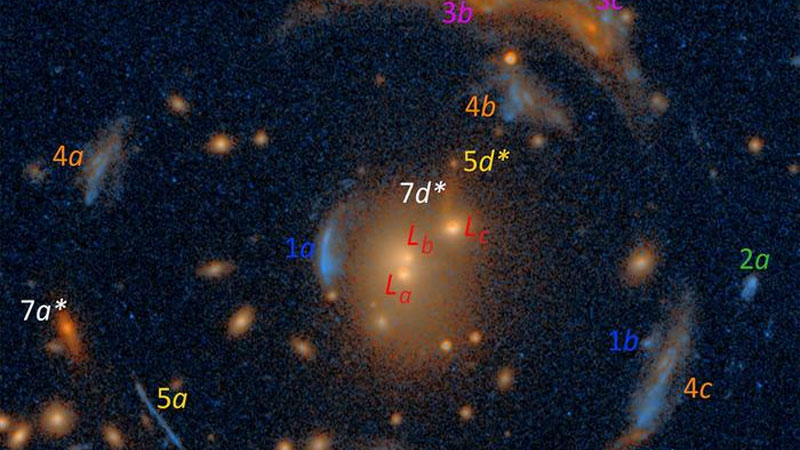Scientists from the National Laboratory named after. Lawrence Berkeley announced the discovery of a gravitational lens of record strength. They discovered a rare arrangement of a number of galaxies and clusters lined up at a distance of up to 12 billion light years from Earth. It’s like finding seven needles lined up in a haystack, the researchers explained the scale of the discovery. The unique lens promises to help reveal the mysteries of cosmology that are not yet amenable to science.

Click to expand. Image source: William Sheu/UCLA
The most interesting thing is that the discovery was not made by chance, but as a result of a targeted search. Scientists have created a computer model specifically to search for unique gravitational lenses. The model was loaded with data from many previous sky observations and then manually selected the most promising candidates. In fact, the supercomputer was looking for “needles in a haystack,” which it did brilliantly. The model created by scientists will also allow the analysis of data collected from observations through this “universal telescope,” which is a complex task. Due to the distortion of space-time, the same galaxy through a gravitational lens can be represented by two, three or even more images, which is not always obvious. And the found “superlens” distorts space-time six times in succession!
In the photograph of the “carousel lens” taken through the Hubble telescope, as scientists called it, you can see the central lens formed by the cluster of galaxies closest to Earth, indicated by the letter L (there are four of them). They are 5 billion light years away. Behind this cluster, almost in a perfect line of sight from Earth, are seven galaxies in five groups at a depth of up to 12 billion light years. Each of them has several copies, multiplied due to the distortion of space-time along the path of light (they are designated by letters with serial numbers). An almost perfect straight line passing through all seven galaxies and the cluster in the foreground appears as concentric circles in the image, with duplicate galaxies smeared around them, each along its own circumference. This is no longer a lens, but a whole gravitational lens.
But the miracle of chance does not end there. Notice galaxy number 4, whose four images are arranged almost perfectly in a cross around the central cluster. This is the so-called Einstein Cross. The significant separation of the four copies of this galaxy around the nearly empty space at the center indicates the presence of dark matter.
«This is an unprecedented discovery, and the created computational model shows very promising prospects for measuring the properties of space, including the properties of dark matter and dark energy,” the authors of the work believe.